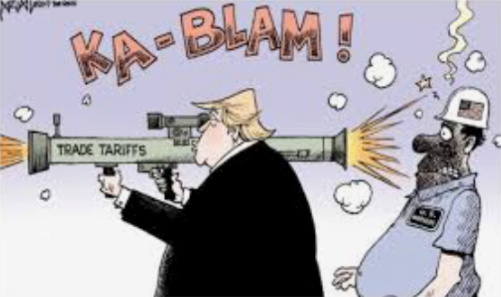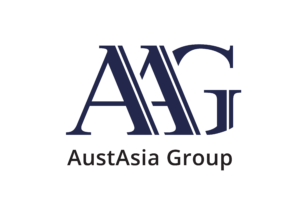How did we get here?
Talks between the two sides broke down in May after US officials accused China of pulling back from commitments it had made previously, just when negotiations were nearly finished.
The US has accused China of allowing intellectual property theft and forcing US companies to share their technology with Chinese counterparts to do business in China. It wants China to change its laws on those and other issues.
China denies such practices and is reluctant to make sweeping legal changes.
Both countries have levied tariffs on the other, but Trump made two significant concessions at the recent G20 meeting in Osaka with Xi, to get talks started again: he agreed not to put tariffs on some US$300 billion in additional Chinese imports and to loosen restrictions on Chinese technology company Huawei (see Special Report: Why is Huawei in the middle of the US-China trade war?).
China welcomed the US decision not to put new tariffs on Chinese goods but added the removal of existing US tariffs was essential for a trade deal.
The United States has 25% tariffs on US$250 billion of Chinese goods now, ranging from semiconductors to furniture.
Trump surprised markets on Saturday 28th June, with an announcement that US companies would be allowed to sell products to Huawei, which was placed on a so-called Entity List in May over national security concerns.
If we can touch on the US-China stoush for a little longer as it is the most critical influencer on global economies at the moment, so we encourage you to keep reading…
When the US puts tariffs on Chinese goods that they import (or any other imported goods for that matter), it makes those goods more expensive for the US consumer. So the average American citizen has less money in their pocket if they still want to buy those goods – they have less to spend on other things. This squeezes growth.

On the other hand, lowering interest rates is intended to put more money in their pockets, as mortgage and other payments will be lower – this is how central banks use Monetary Policy, to try to influence the economy, by increasing or decreasing interest rates.
This is the reason that countries are counting on their central banks to lower interest rates to help offset lower growth. The lower growth as a direct result of tariffs. But central banks can only do so much to absorb or reduce the impact of tariffs on growth. You can lead a horse to water…
Business investment is also required for economic expansion (growth). But with scatter-gun threats of tariffs (Trump is again targeting Europe), businesses are reluctant to invest because of the uncertainty.
But, remember, the trade war with China is very much about intellectual property, trade secrets, and Forced Technology Transfer. However some US company profits, like Apple and FedEx for example, have been slashed in the post-tariff world. So imposing these tariffs, and the tit-for-tat retaliation, have hurt the many US industries that they were intended to protect.
We are now looking towards our newly elected Federal Government to spend (i.e. fiscal stimulus) on infrastructure projects or in the form of tax cuts (or the like) to help put money back into our pockets, so we continue to spend, so our economy can continue to grow (even if it grows at a slower rate).
The biggest loser in all of this are retirees, who rely on cash products or term deposits for income. They are now being forced to look at other investments, just to provide enough money to live.
A re-escalation of the US-China trade war will adversely affect business confidence and investment. This is why global markets and economies are in the hands of Donald Trump (see Special Report: Who is driving the world economy and global markets?).
In writing this report, we have sourced information from the following providers, including but not limited to:
Aberdeen Standard Investments, AMP Capital Markets (including Dr Shane Oliver, Chief Economist and Head of Investment Strategy), ANZ Capital Markets, Australian Bureau of Statistics, BetaShares, Bloomberg, Business Insider, Colonial First State, Commonwealth Bank, Investopedia IRESS, Investopedia Livewire Market Watch, Investopedia Macquarie, Morningstar, Montgomery Investment Management, Peter Switzer, Reserve Bank of Australia, Russell Investments and VanEck.
Important information and disclaimer
This publication has been prepared by AustAsia Group, including AustAsia Financial Planning Pty Ltd (AFSL License No 229454) and AustAsia Accounting Services Pty Ltd (Registered Tax Agent No 7587 3005).
AustAsia Accounting Services Pty Ltd – Liability limited by a scheme approved under Professional Standards Legislation.
Any advice in this publication is general only and has not been tailored to your circumstances. Accordingly, reliance should not be placed on the information contained in this document as the basis for making any financial investment, insurance, or other decision. Please seek personal advice before acting on this information.
Information in this publication is accurate as at the date of writing, 10 July 2019. Some of the information may have been provided to us by third parties. While it is believed the information is accurate and reliable, the accuracy of that information is not guaranteed in any way.
Opinions constitute our judgement at the time of issue and are subject to change. Neither the Licensee nor any member of AustAsia Group, nor their employees or directors give any warranty of accuracy, nor accept any responsibility, for any errors or omissions in this document.
Any general tax information provided in this publication is intended as a guide only and is based on our general understanding of taxation laws. It is not intended to be a substitute for specialised taxation advice or an assessment of your liabilities, obligations or claim entitlements that arise, or could arise, under taxation law, and we recommend you consult with a registered tax agent.



